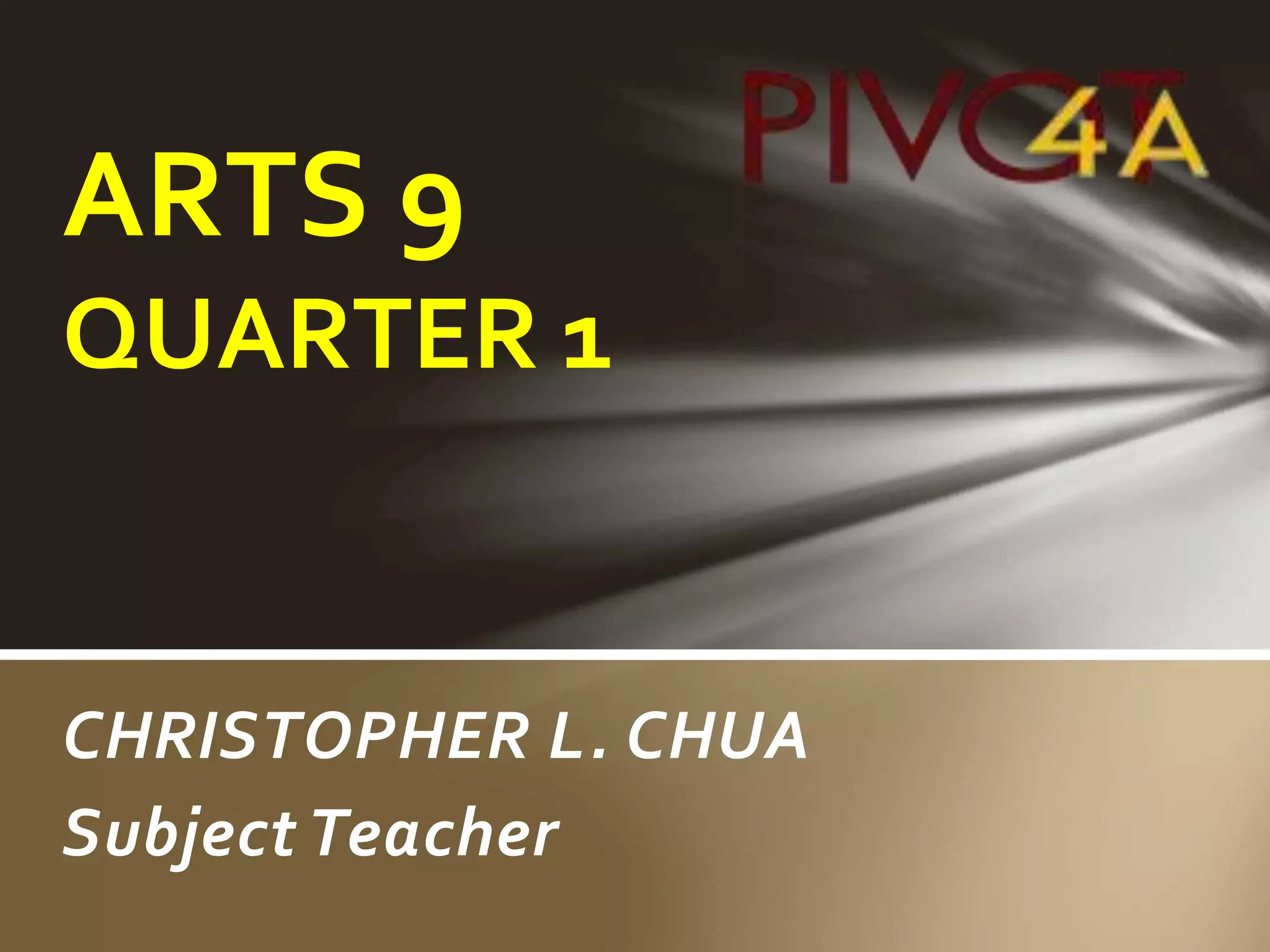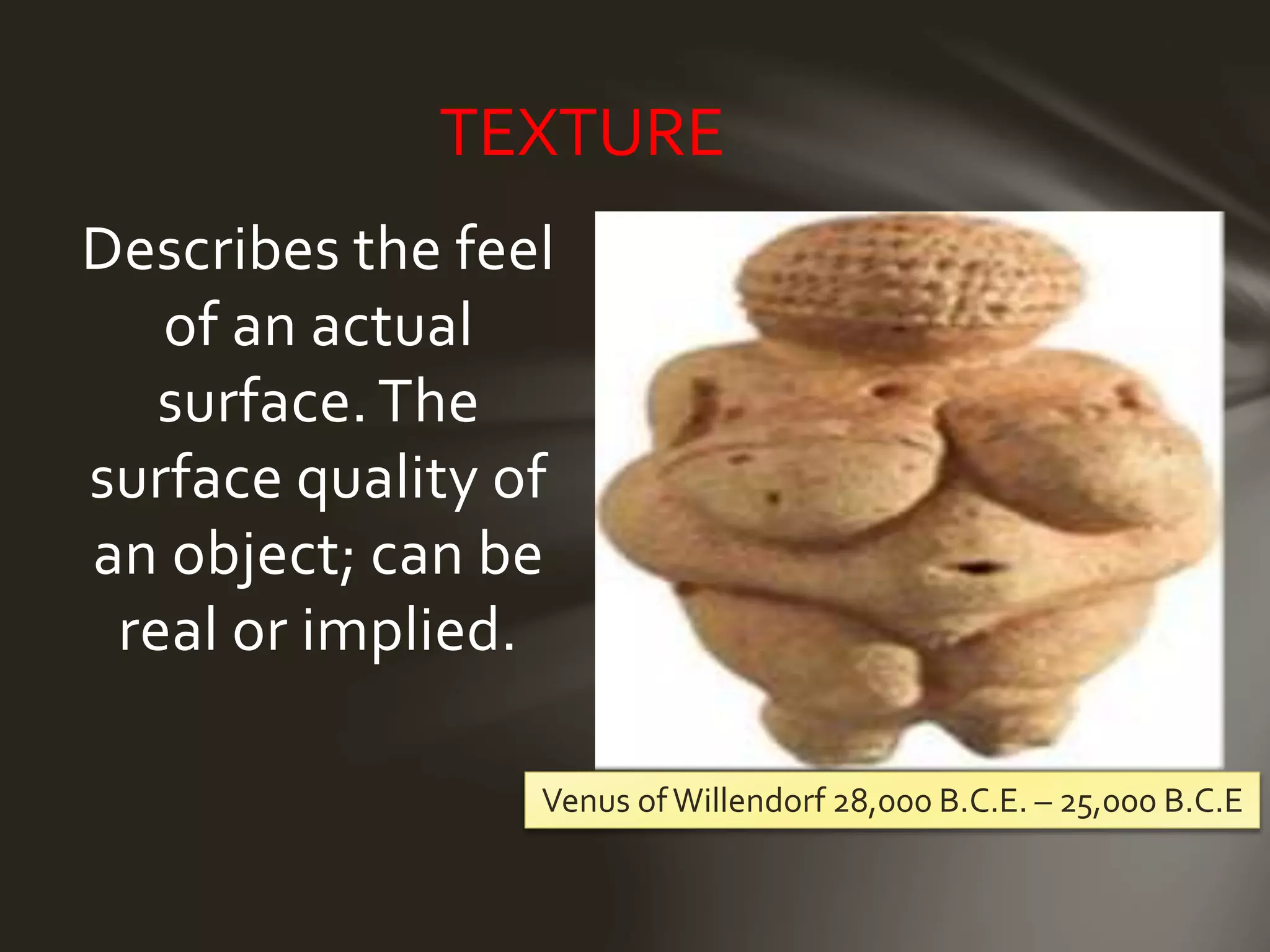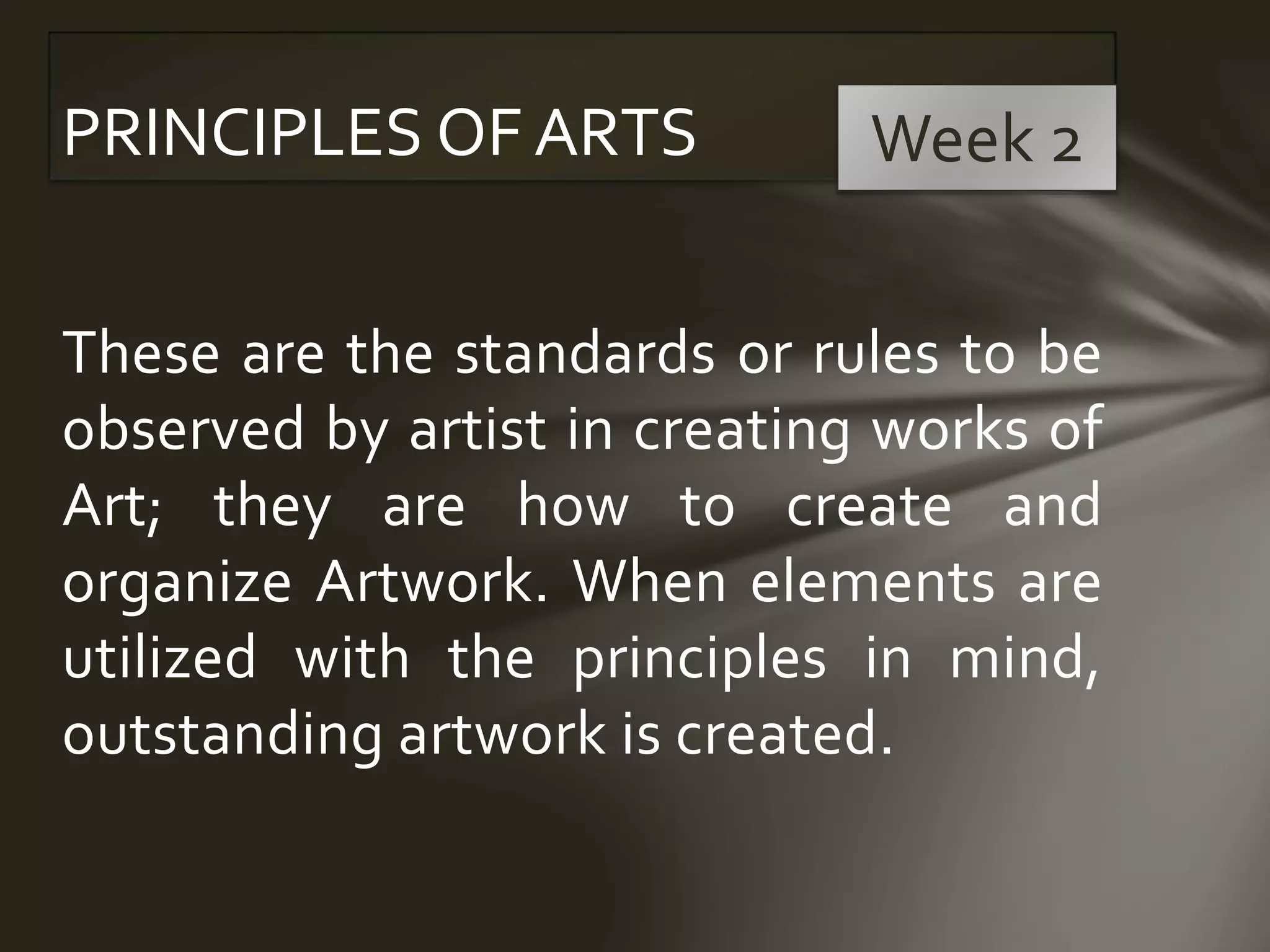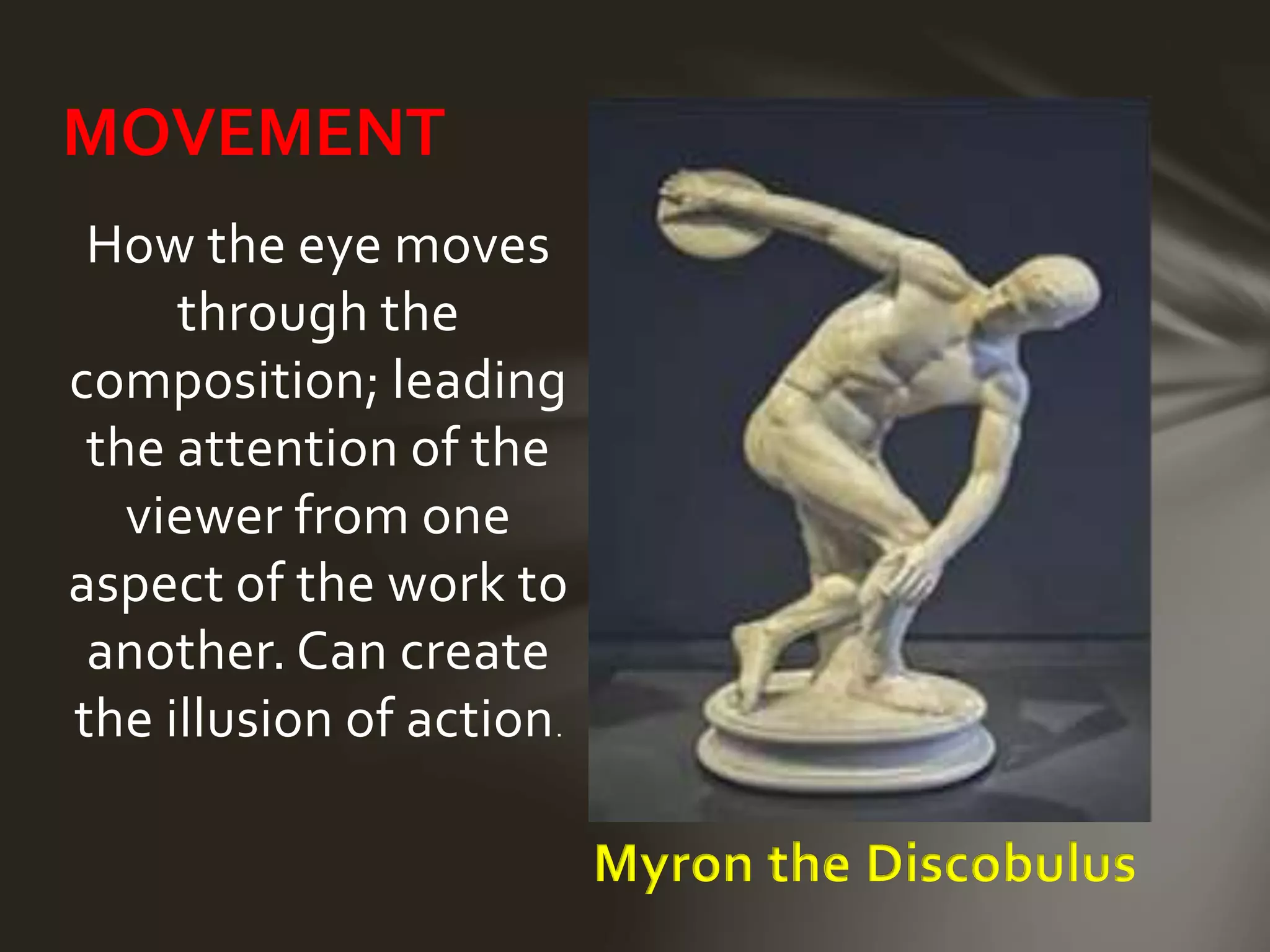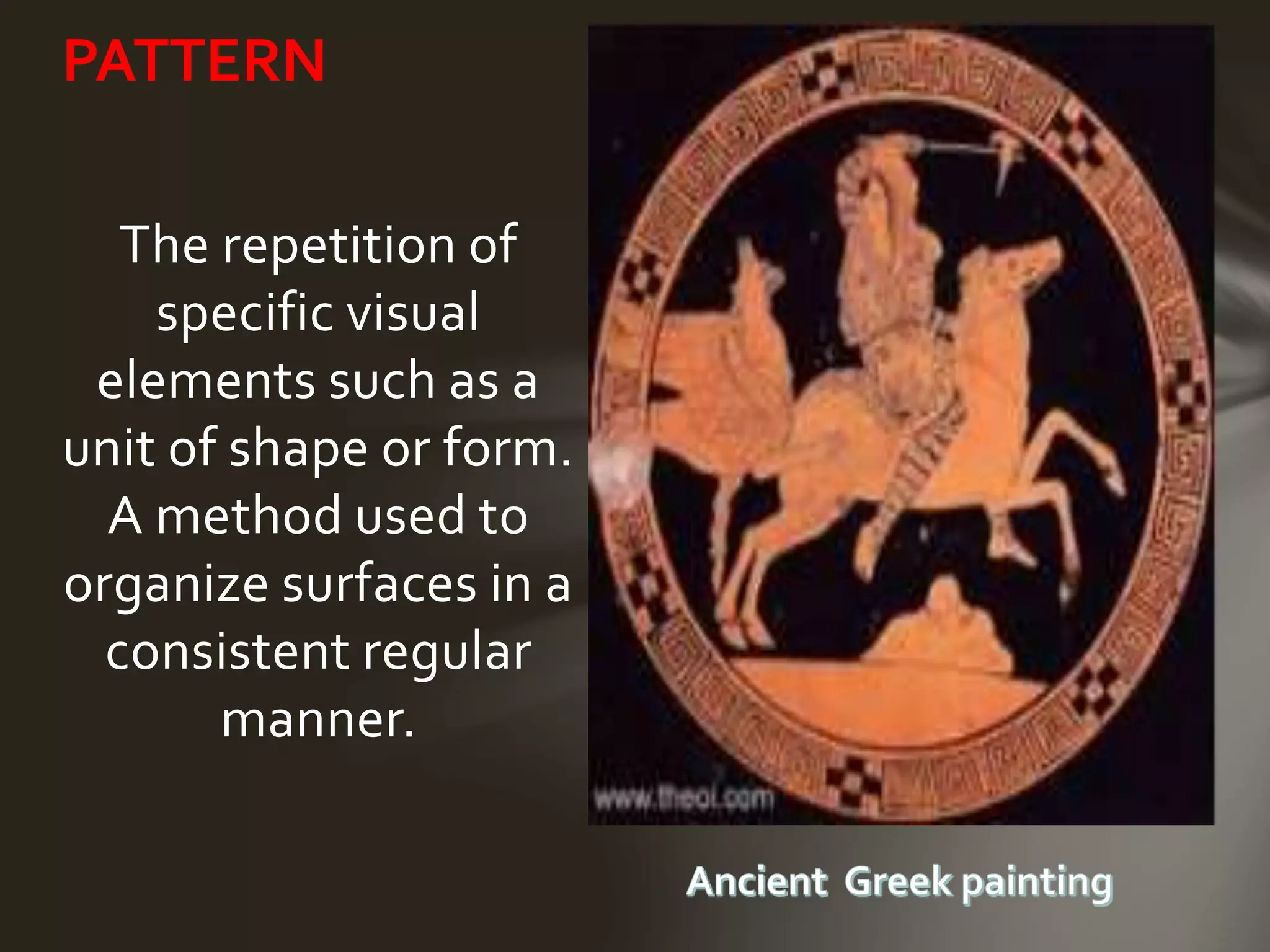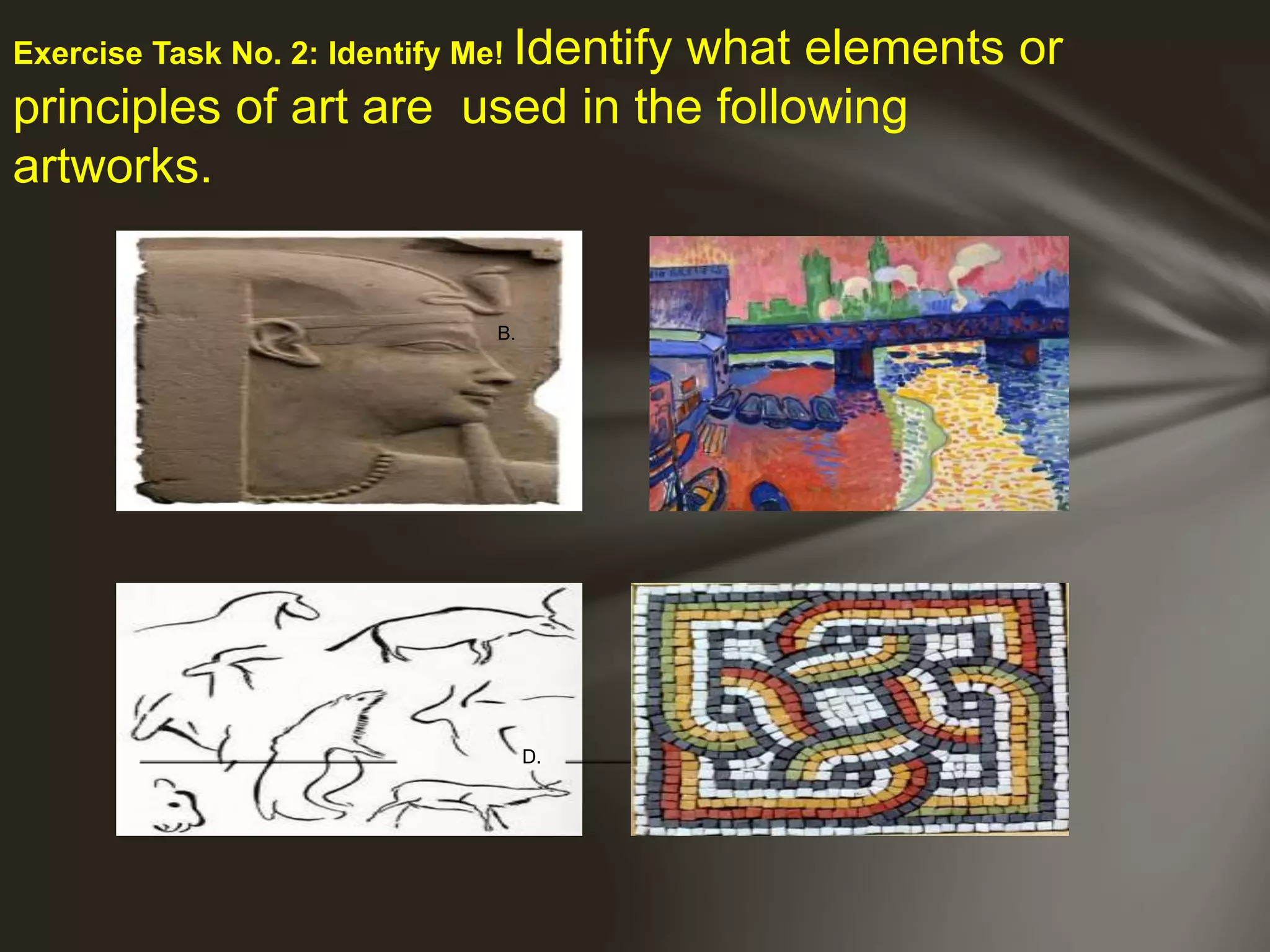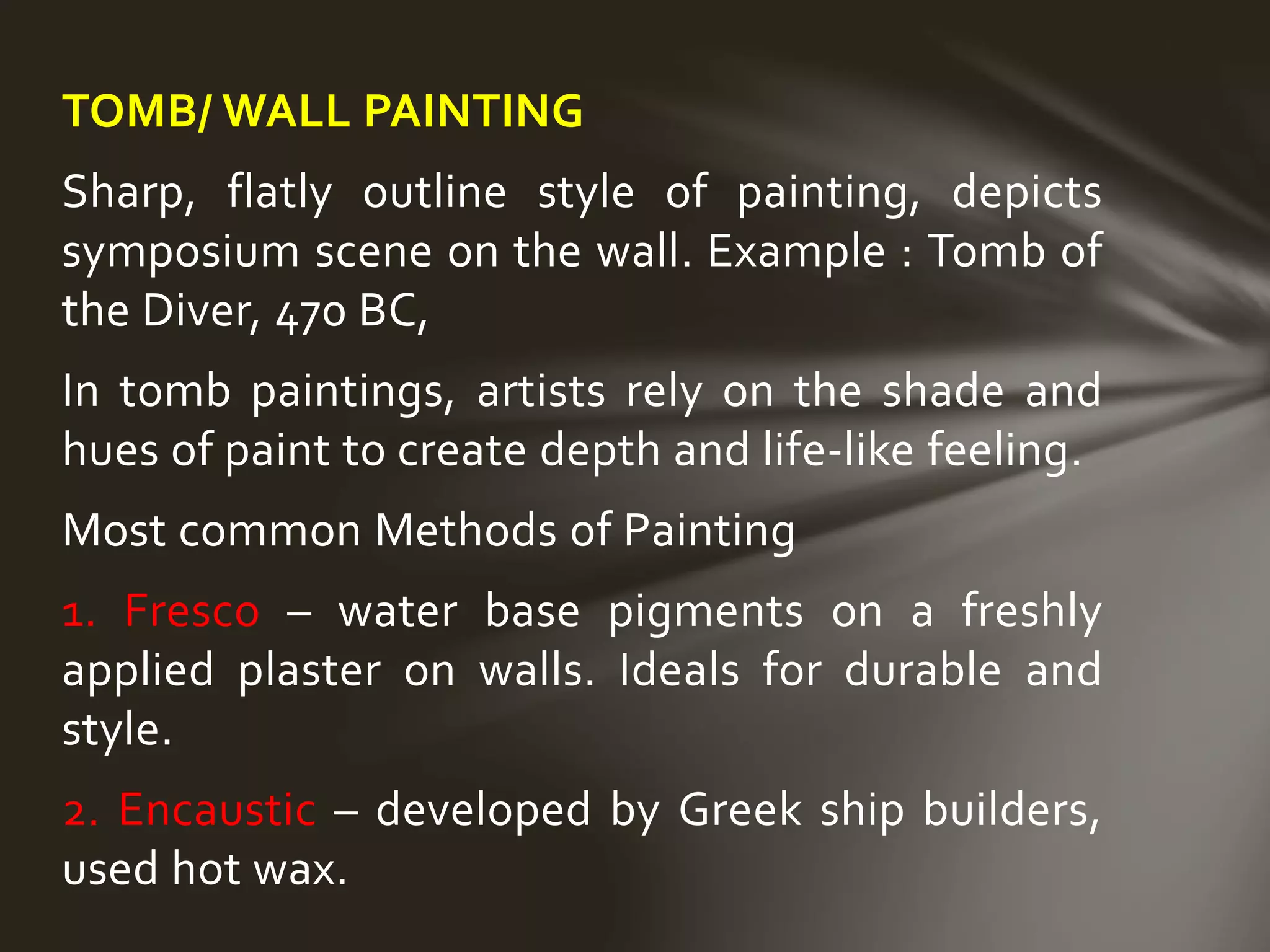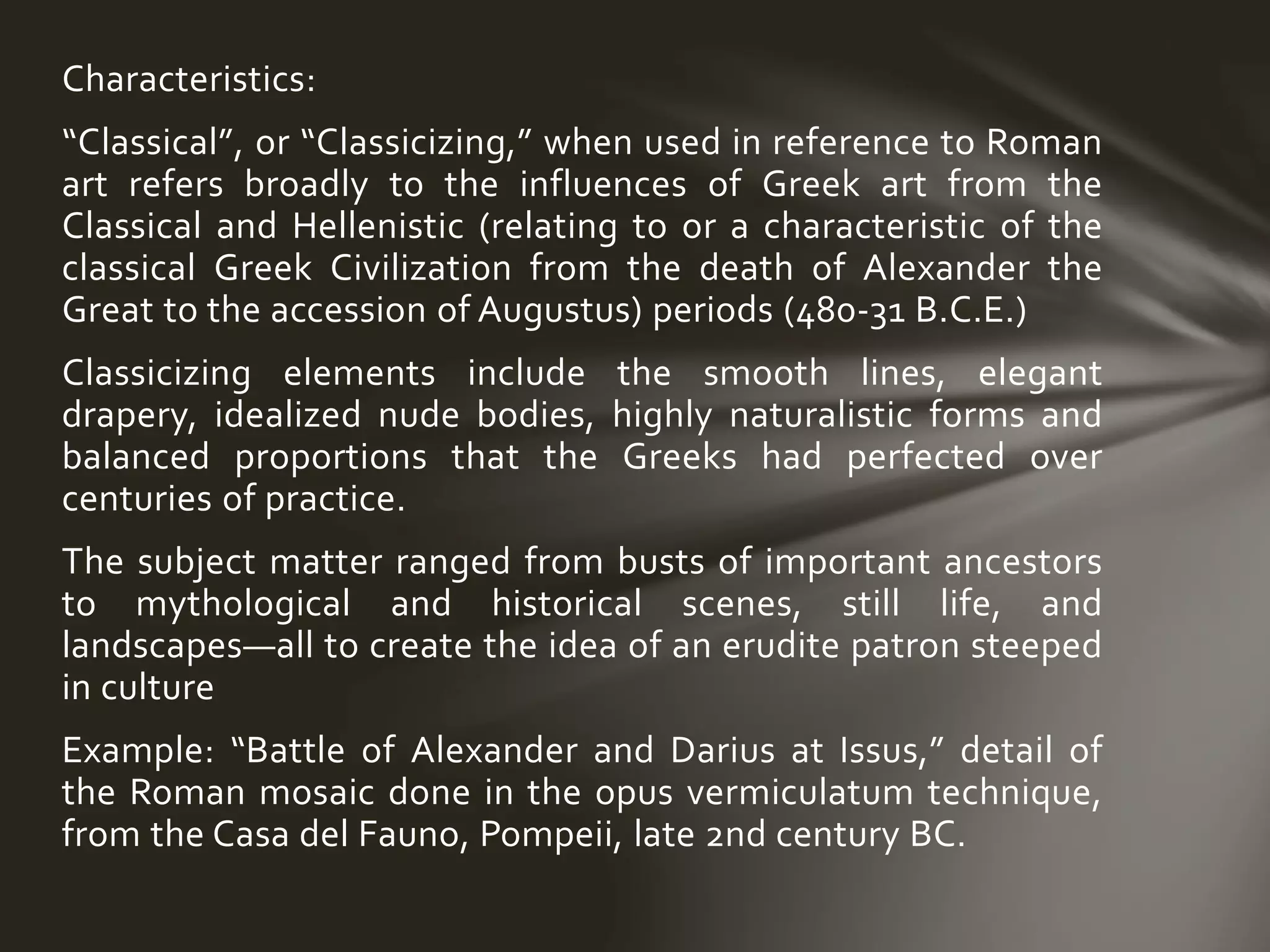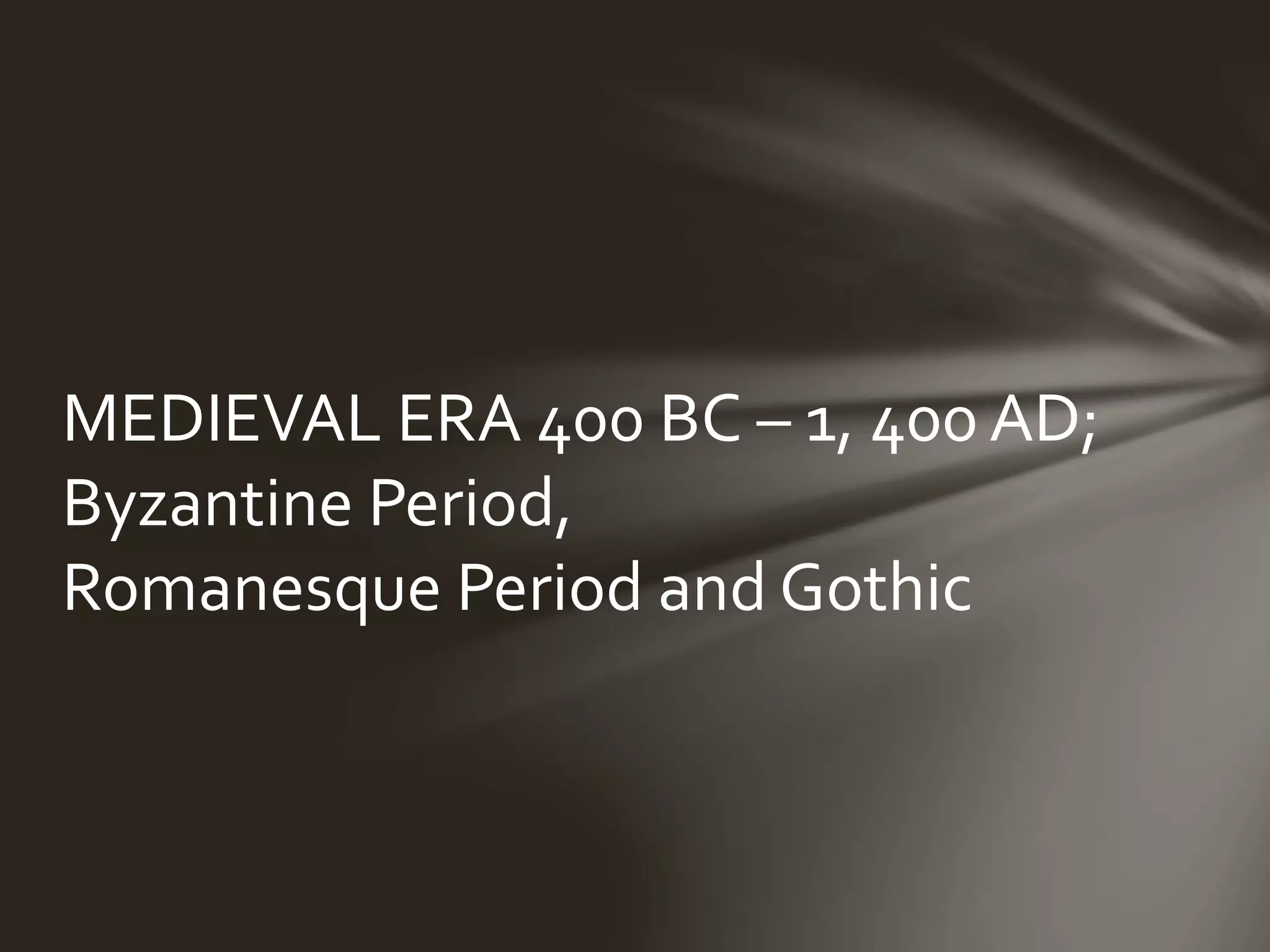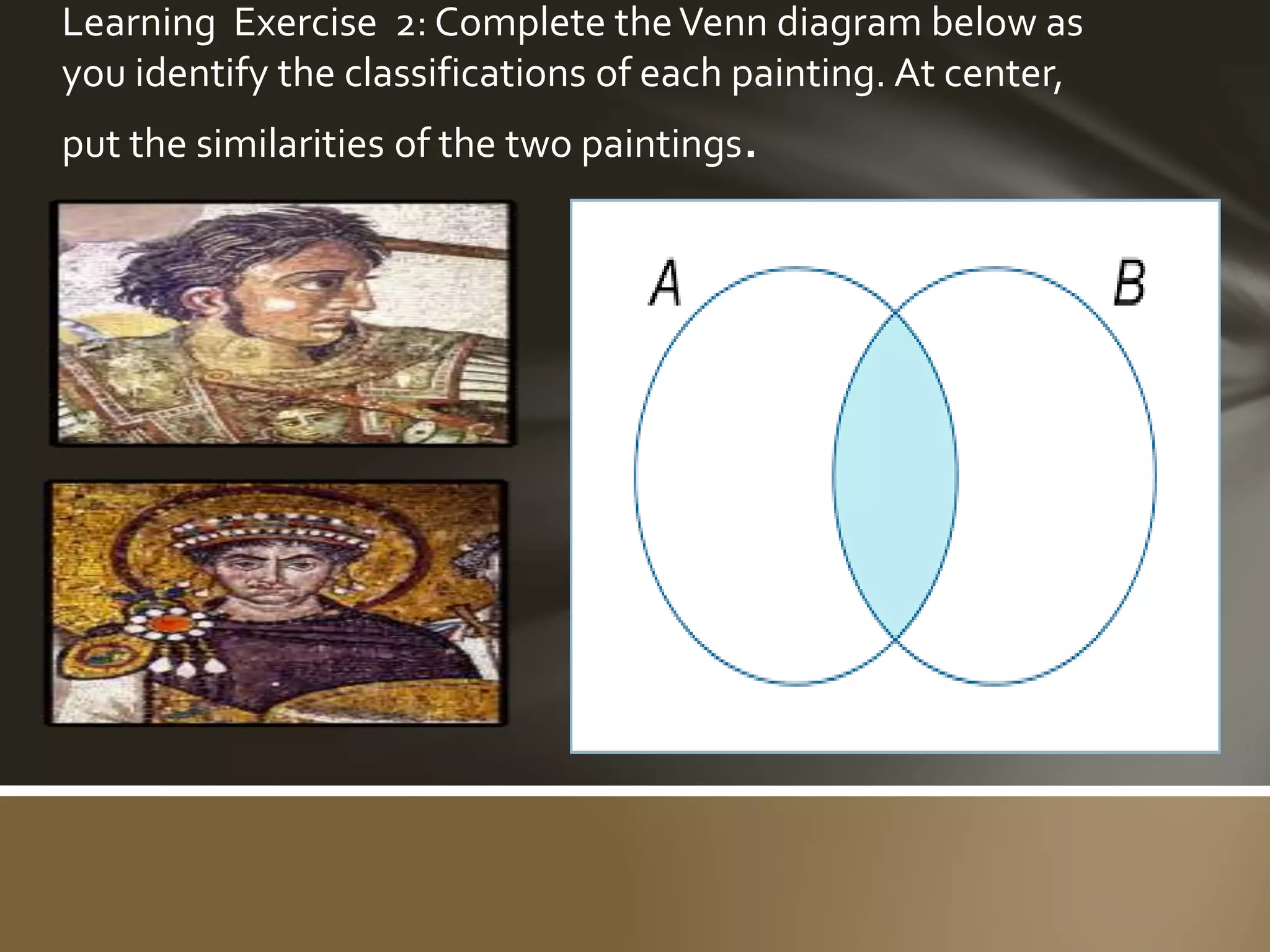This document provides an overview of a lesson on the elements and principles of art in Western and classical styles. It discusses key concepts like line, shape, color, value, form, texture, and space as elements of art. Principles of art covered include balance, contrast, emphasis, movement, pattern, rhythm, and unity. Examples are given of art from different periods to illustrate how elements and principles were applied, including Prehistoric cave paintings, Egyptian hieroglyphics, Greek sculptures and vases, Roman mosaics and tomb paintings, and Medieval works like Byzantine mosaics and Gothic stained glass windows. Students are given exercises to identify elements and principles in various artworks and compare similarities and differences between two paintings
